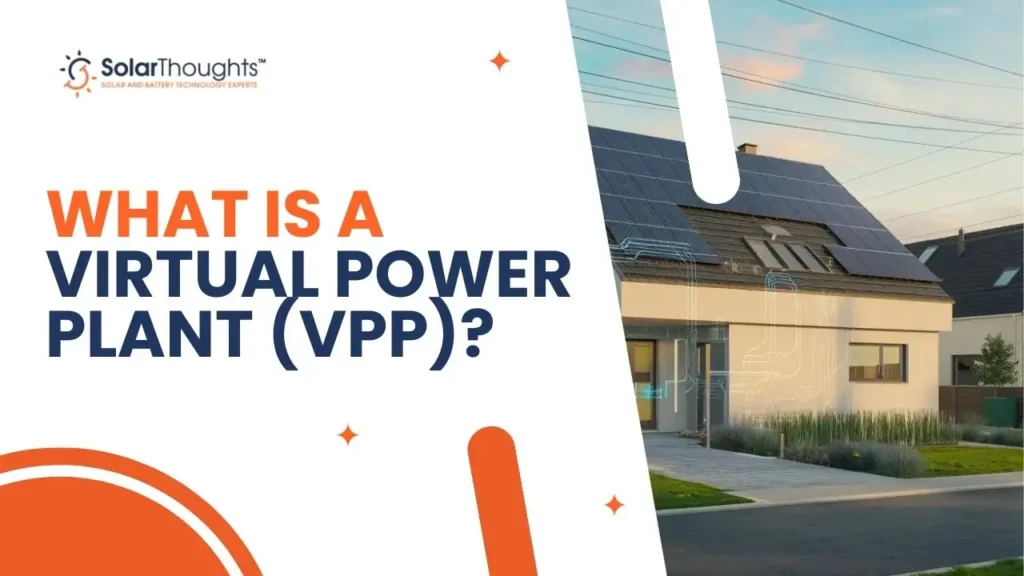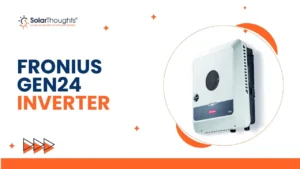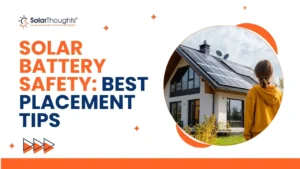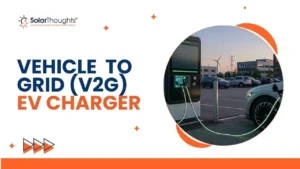Visualize a coming time when your home is not just using energy, but also helps in supplying power to your local area. A tomorrow where electricity shutdowns are uncommon, the cost of electric bills decreases and our impact on the environment greatly lessens. This isn’t something we expect only in a dream – it’s starting to come true today because of Virtual Power Plant (VPP), an advanced technology.
Table of Contents
ToggleIn the bright and sunny regions of Queensland, a silent change is happening. Solar panels are starting to appear on rooftops and battery storage systems are becoming usual items. There’s a fresh participant in the arena of energy now – Virtual Power Plants. They’re altering our methods for creating, distributing, and using electricity as they convert single households into linked sources of power.
But what is a Virtual Power Plant really? How does it function, and why should you be concerned? Whether you’re an owner of a home trying to make the most out of your solar investment, a citizen with care for environment or someone who has curiosity about advanced technology, this writing will reveal the transformative universe of VPPs. This article explores the concept of Virtual Power Plants, their benefits, and their growing importance in Southeast Queensland’s energy sector.
What is a Virtual Power Plant?
A Virtual Power Plant is an innovative network of decentralized, medium-scale power generating units. These units can include:
- Solar parks
- Wind farms
- Combined Heat and Power (CHP) units
- Flexible power consumers
- Energy storage systems
The key feature of a VPP is its central control system, which intelligently links, monitors, forecasts, and dispatches these distributed energy resources. This sophisticated orchestration allows VPPs to function as a single, coordinated power plant.
Read More: Solar Panel Maintenance Tips: Maximize Your Energy Efficiency
How Do VPPs Work?
Virtual Power Plants operate on a simple yet powerful principle:
- Aggregation: The VPP combines multiple energy sources into a single, virtual entity.
- Real-time monitoring: Advanced software constantly tracks energy production and demand.
- Smart distribution: The system allocates power where it’s needed most, optimizing efficiency.
- Grid stabilization: During peak times, VPPs can provide additional power to the grid, preventing outages.
The VPP Landscape in Southeast Queensland
Southeast Queensland, with its abundant sunshine and growing number of solar installations, is an ideal location for VPP technology. Several initiatives are already underway:
- Yurika’s Virtual Power Plant: Energy Queensland’s subsidiary, Yurika, has implemented a VPP connecting solar PV systems and batteries across the region. This network helps stabilize the grid during peak demand periods.
- Tesla’s Queensland VPP: While primarily focused on South Australia, Tesla’s VPP program has expanded to include parts of Queensland, allowing homeowners to participate in this innovative energy solution.
- Local Council Initiatives: Sustainability agencies in various councils are exploring VPP options as part of their commitment to reducing carbon footprints.
Also Read: 13.2kw Solar System Price Brisbane
Benefits of Virtual Power Plants
VPPs offer numerous advantages for both individual consumers and the broader community:
For Consumers
- Lower Energy Costs: Participants in VPP programs can often sell excess energy back to the grid, potentially reducing their electricity bills.
- Maximized Solar Investment: For homeowners with rooftop solar, VPPs provide a way to optimize energy use and storage, maximizing the return on their investment.
- Increased Energy Independence: By being part of a VPP, consumers gain more control over their energy production and consumption.
For the Community
- Increased Grid Stability: By balancing supply and demand in real-time, VPPs can help prevent blackouts during extreme weather events or periods of high demand.
- Environmental Impact: VPPs facilitate greater integration of renewable energy sources, reducing reliance on fossil fuels and moving towards sustainability goals.
- Economic Benefits: The growth of VPPs can create new jobs in the renewable energy sector and stimulate local economies.
For the Energy Sector
- Improved Efficiency: VPPs allow for more efficient use of existing power generation and distribution infrastructure.
- Reduced Need for Peaker Plants: By managing peak demand more effectively, VPPs can reduce the need for costly and often polluting peaker plants.
- Enhanced Grid Flexibility: The decentralized nature of VPPs makes the power grid more adaptable to changing energy needs and technologies.
Also Read: 6.6kW Solar Panel Systems in Brisbane
The Future of VPPs in Queensland
As Queensland continues to face new energy challenges and opportunities, VPPs are likely to play an increasingly important role. Future developments could include:
- Expanded Residential Participation: More homeowners joining VPP programs, creating a larger, more effective network.
- Integration with Electric Vehicle Charging: As electric vehicles become more common, their batteries could become part of the VPP network.
- Large-scale Battery Storage: Incorporation of community-level battery storage systems to enhance VPP capabilities.
- Commercial and Industrial Participation: Larger energy users joining VPP networks, adding significant capacity to the system.
- Advanced AI and Machine Learning: Improved prediction and management of energy supply and demand through cutting-edge technology.
Also Read: Pros and Cons of solar batteries
Challenges and Considerations
While VPPs offer many benefits, there are also challenges to consider:
- Initial Setup Costs: The upfront investment in solar panels, batteries, and smart technology can be significant.
- Regulatory Framework: As a relatively new technology, VPPs may require updates to existing energy regulations.
- Cybersecurity: Ensuring the security of the VPP network against potential cyber threats is crucial.
- Public Understanding: Educating consumers about the benefits and operation of VPPs is essential for widespread adoption.
Getting Involved in a VPP
For those interested in participating in a Virtual Power Plant, here are some steps to consider:
- Install Solar and Battery: Most VPP programs require participants to have both solar panels and a battery storage system.
- Research VPP Providers: Look into energy retailers in your area that offer VPP programs.
- Check Eligibility: Ensure your system meets the technical requirements for participation.
- Understand the Agreement: Carefully review the terms of the VPP program, including any financial incentives or obligations.
- Installation and Setup: Once you’ve chosen a provider, they will guide you through the process of connecting to the VPP network.
Also Read: How Much Do Solar Panels Cost in Brisbane?
Conclusion
Virtual Power Plants give a thrilling boundary in managing energy, providing us with the way to a power grid that is better sustainable, efficient and durable. With Queensland moving forward strongly embracing renewable sources of energy, VPPs are poised to have an important function in forming our future with regard to energy. Utilizing technology’s strength and plentiful natural resources we possess, it becomes possible for us to establish an intelligent more environmentally friendly scenario for coming generations’ source of power.
If you’re a house owner who wants to make the most of your solar investment, or maybe a business that aims for lower energy bills, or even if you just have an interest in endorsing renewable energy sources, Virtual Power Plants provide a chance to join the revolution of green power. As this technology is growing and spreading more widely, it’s evident that VPPs will play a significant role in Queensland’s transition towards cleaner and more efficient future energetics.
Looking for ways to boost your solar savings? Get a free quote today and discover how the SolarThoughts & Amber VPP program can help you earn up to 19c per kWh!
Solar Panel in Brisbane






